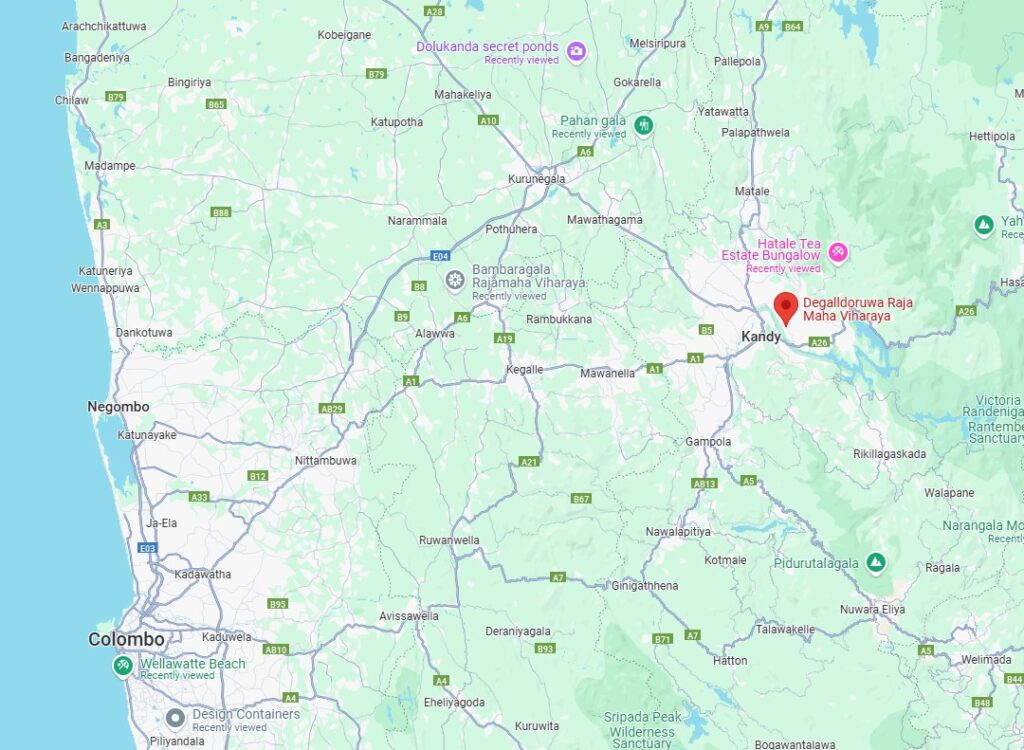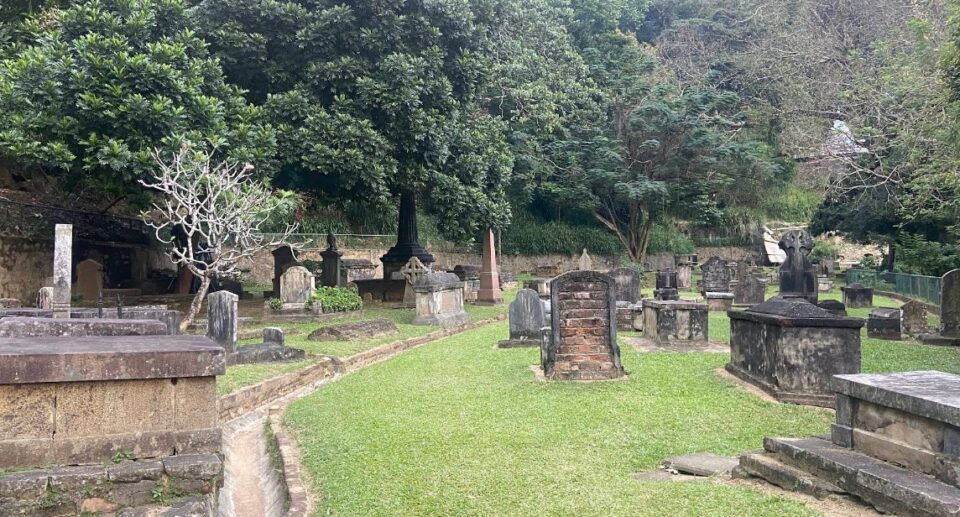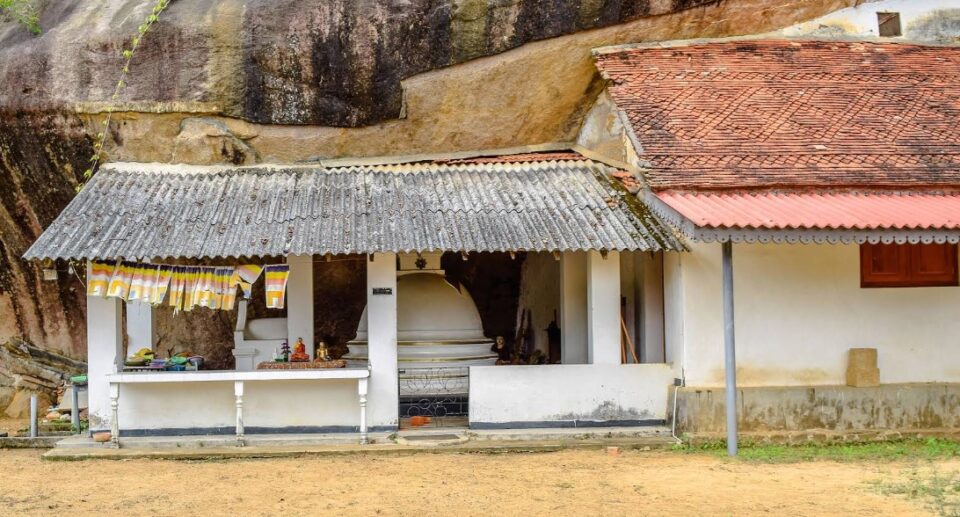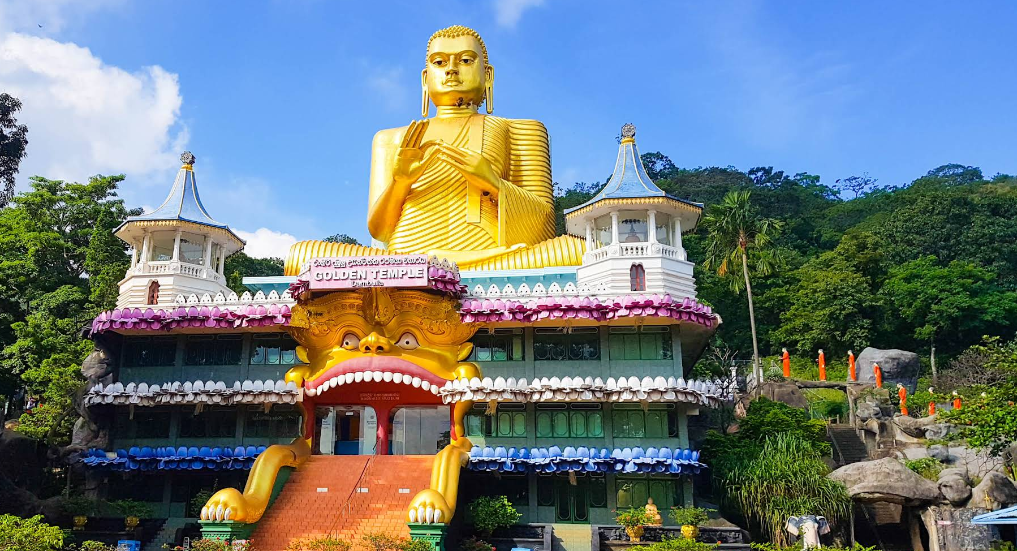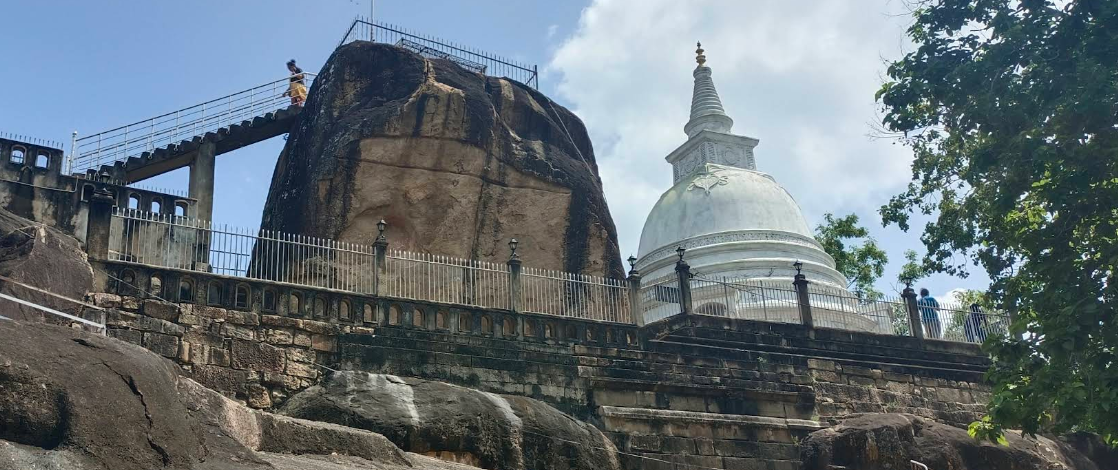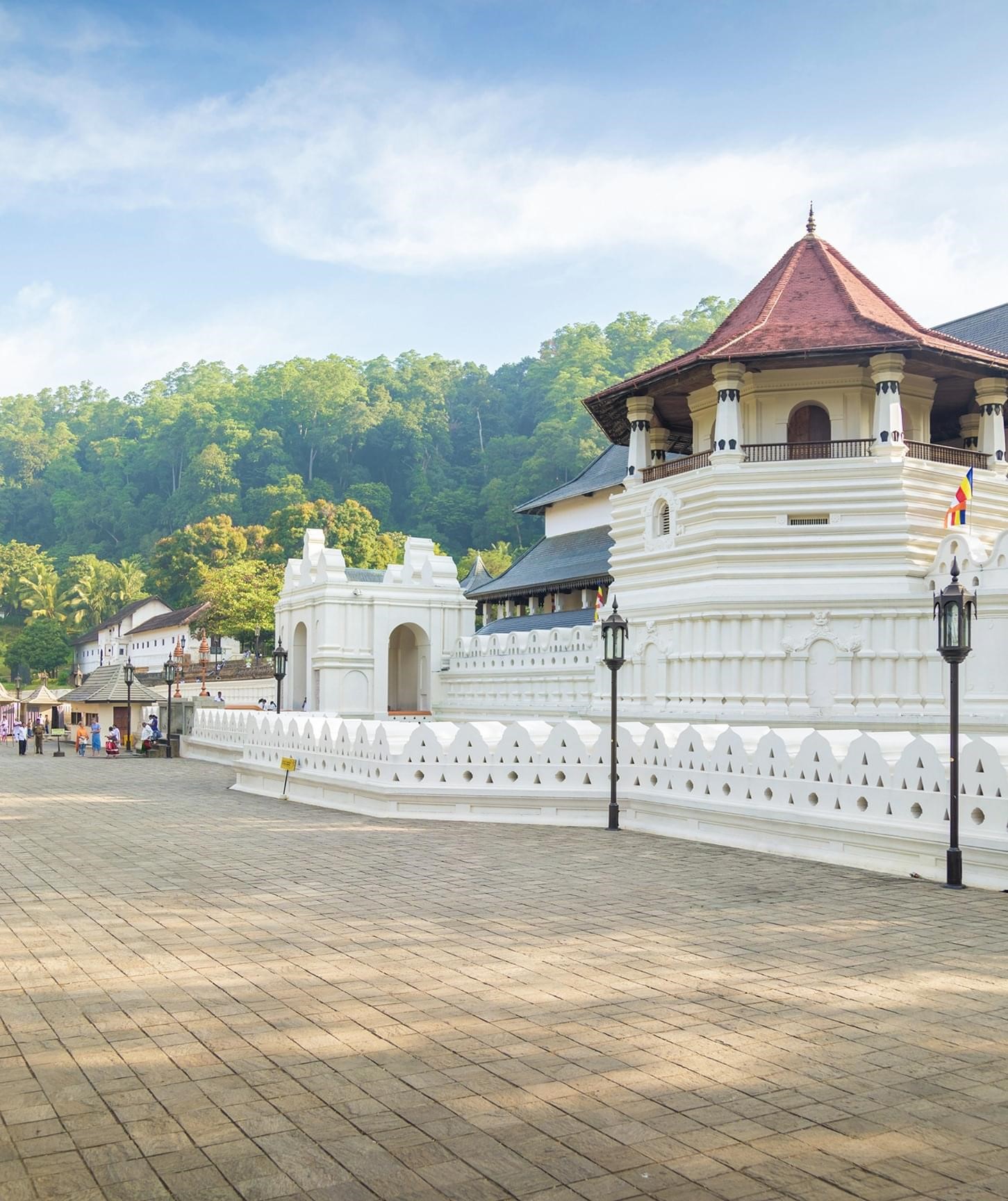Degalldoruwa Raja Maha Viharaya: A Hidden Gem of Kandyan Art
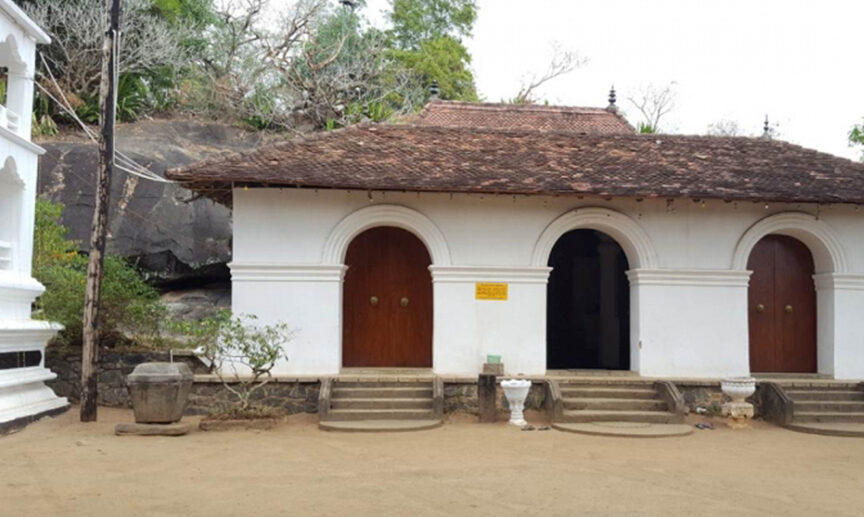
Degaldoruwa Raja Maha Vihara is a Buddhist cave temple located in Amunugama, Kandy, Sri Lanka. It is famous for the Kandyan Era Frescoes.The cave itself was said to have been excavated out from a rock that comes up to a height of around 12.3 m and encloses the shrine room and entrance chamber.
The Degaldoruwa Tamba Sannasa is a Copper Plate that gives details of the construction of the temple and royal grant of land.Firstly, during 1771 AD when King Kirti Sri Rajasinha [1747-1782 AD] was on the throne, his younger brother Rajadhi Rajasinha started the work. Later, after obtaining the throne, it was completed by Rajasinha. On its completion, Rajasinghe placed it in the care of a scholarly monk, Moratota Dhammakkanda Maha Nayaka Thera [1734-1811], who incidentally was also both the preceptor and chief counsellor of Rajasingha.
History
It is said in local tradition that the temple has its origin during the period when a farmer checked the space between two massive boulders that were resting side by side close to his village and discovered there a pile of golden sickles. He used one of the sickles to harvest his crops and brought it back in the evening after he had returned home. He repeated this every morning and brought back the sickle every evening.
On the last day, he took along two sickles, and in the evening, he brought back one of them. The treasure guardian, realizing that the farmer had stolen one of his sickles, went to see the farmer and asked him to bring the same back. The needy farmer dashed back to his fields and brought back the sickle. He went back to the crevice between the boulders and deposited the sickle in it. At once, the crevice was sealed by the coming together of the boulders. This incident was not unknown to others of the village community. They themselves informed King Kirti Sri Rajasinha, commanding him to sweep the cave and construct a temple in the very same place.
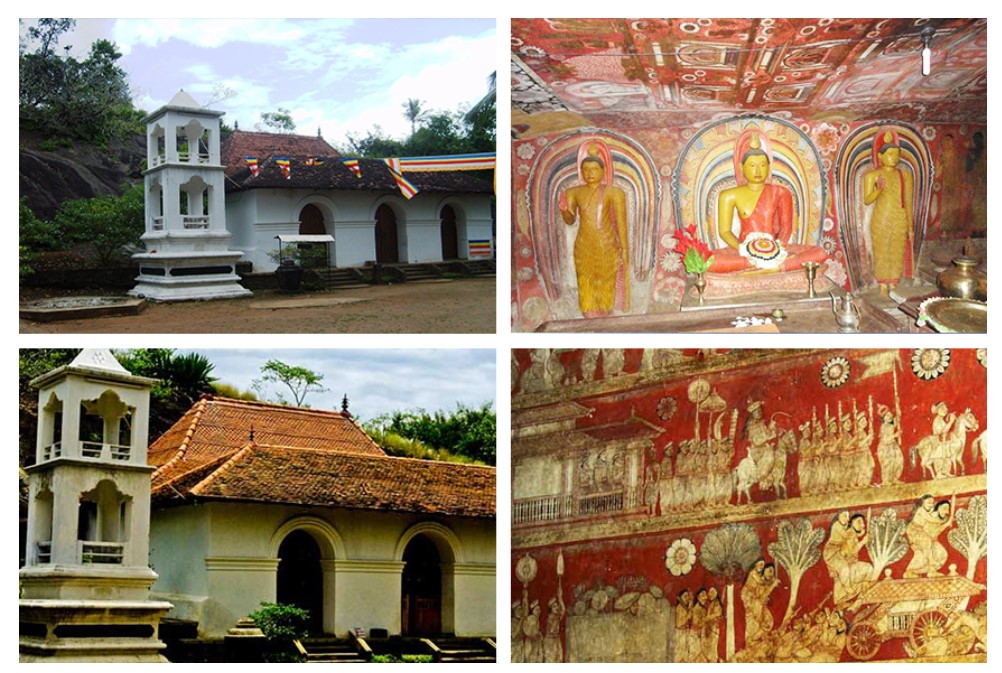
Construction of the Temple
The construction of the Temple was begun by the great patron of the arts King Kirthi Sri Rajasinghe (1747 – 1780). It is reported that the most excellent Kandyan Temple paintings were done under his reign. Unfortunately, he died before Degaldoruwa was finished and it was left for his younger brother King Rajadhi Rajasinghe to complete. On its completion King Rajadhi Rajasinghe left the Temple in the charge of a very learned monk, Moratota Dhammarakkita Nayaka Thera, who was also his guru..
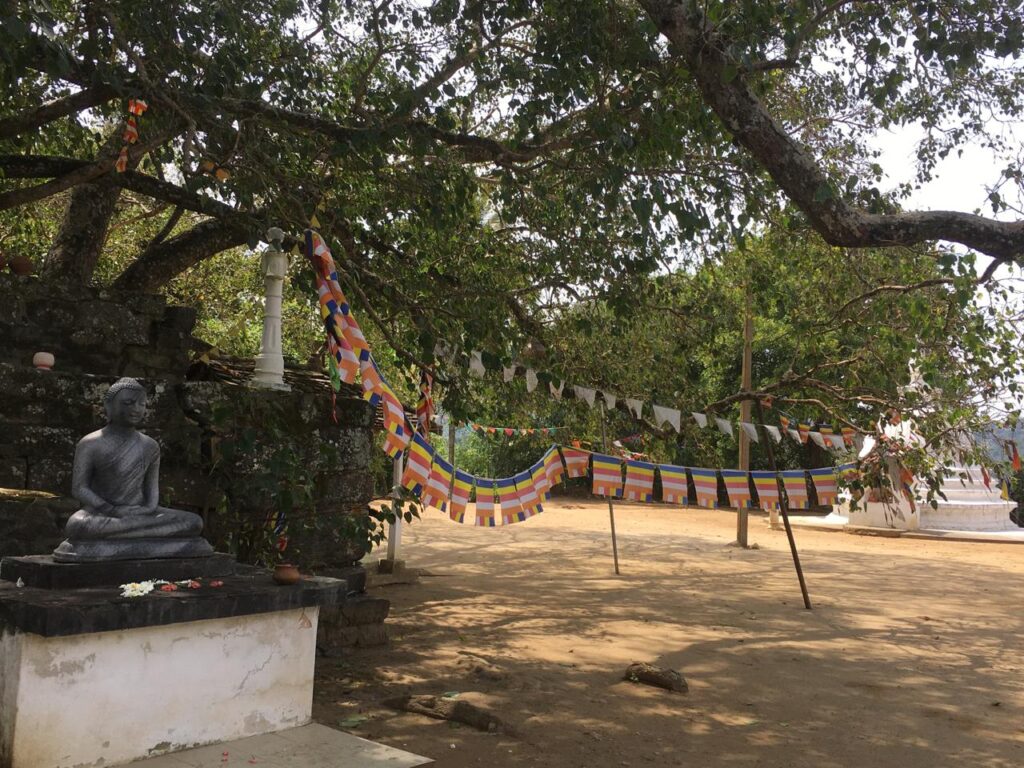
Structures
This stunning 12.3 m (40 ft) rock outcrop has been excavated out of to create a temple, an elaborate rock shelter with two roofed ante-chambers at the front, the first of which is a drum hall, followed by an image house, which are situated outside the rock outcrop and feature wooden roofs atop them while the third chamber, the principal shrine room, is hewn out of the rock itself.
Drumming hall
As opposed to the bulk of other similar temples, the drumming hall here is attached directly to the rest of the temple building and does not occupy a separate pavilion.
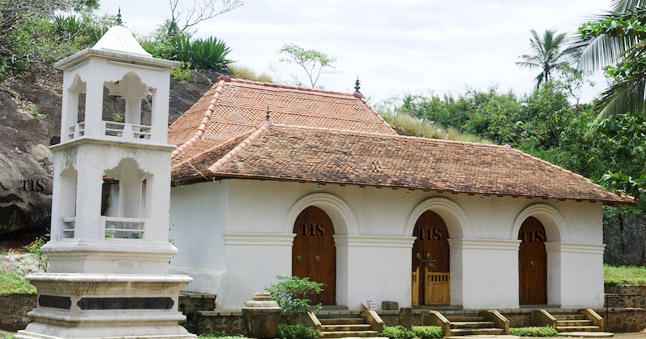
Image house
The image house is by way of an ancient wooden pair of doors under a wooden Makara Torana or Dragon Arch, which leads into the antechamber containing a moonstone and a sequence of paintings illustrating scenes from four Jātaka tales—Vessantara Jātaka, Sattubhatta Jātaka, Sutasoma Jātaka, and Mahaseelava Jataka—in five striking panels.
Shrine room
The entrance doors from here to the central shrine contain metal hardware which was formerly jeweled. The principal image is a large reclining Buddha; the wall facing the reclining Buddha contains murals illustrating scenes of the previous birth of Buddha along with images of stupas at Sri Lanka’s major pilgrimage sites.
Degaldoruwa paintings
The Degaldoruwa paintings are also renowned for their beauty and also show the traditions and social conditions that prevailed at that time, even the clothing of the people of the day and the homes they lived in are well illustrated. In fact, the paintings show a very clear difference between the clothes worn by the people of low-country and up-country regions. These paintings are executed by a team of ‘Sittara’ artists under the leadership of Devendra Mulachari, the most renowned painter among them being Devaragampola Silvatenne Unnanse, who has executed such paintings in other Temples as well during his lifetime. These paintings at Degaldoruwa Viharaya are unique because the elements – trees, animals and humans are usually of the same size.
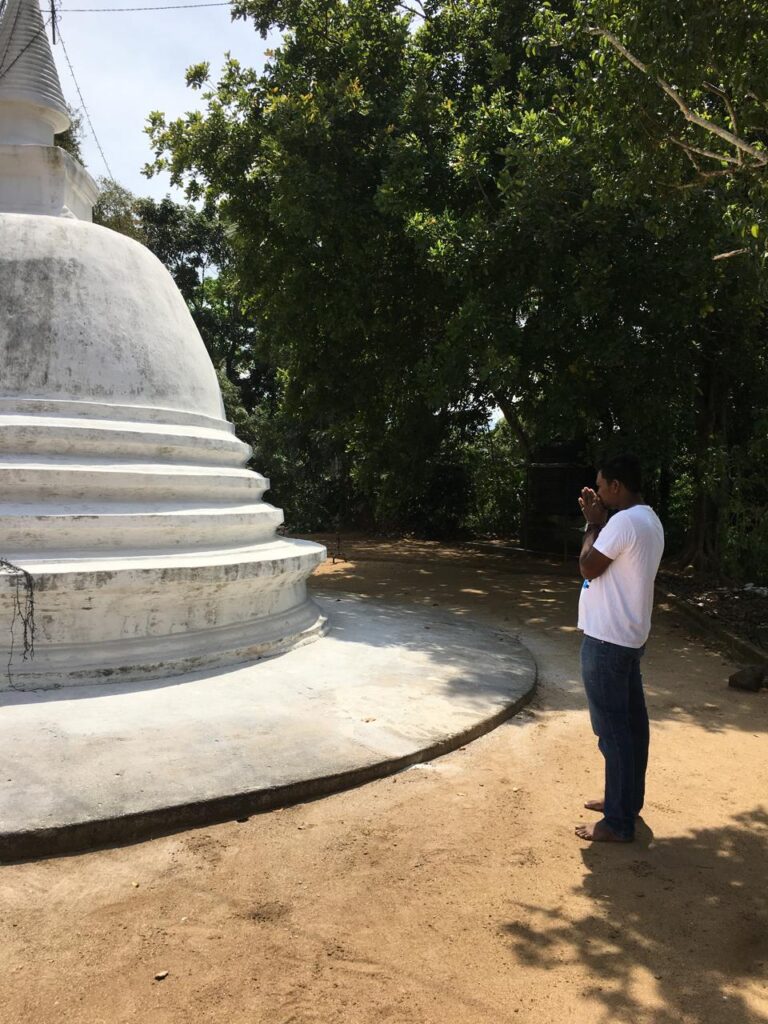
The ‘Budu-ge’ or Image House
The ‘Budu-ge’ or Image House tells a complete tale – indeed four ‘Jataka’ tales or fables. The episodes of each tale are in a running design along the walls, in such a way that as one walks from one end of the room to the other, the tale unfolds in a logical order. The four tales depicted are the popular Vessantara Jataka, Sattubhatta Jataka, Satusoma Jataka and the Mahaseelava Jataka which all tell tales of the Bodhisatva. The ‘Mara Yudde’ (the battle of the Buddha against Mara) also occupies a place of pride amongst all the paintings in the Degaldoruwa Viharaya. The Mara is depicted as having five faces with the Mara army bearing guns. On a more cheerful note, however, a painting of the ‘Mahi Kantawa’ adorns the Shrine ceiling.
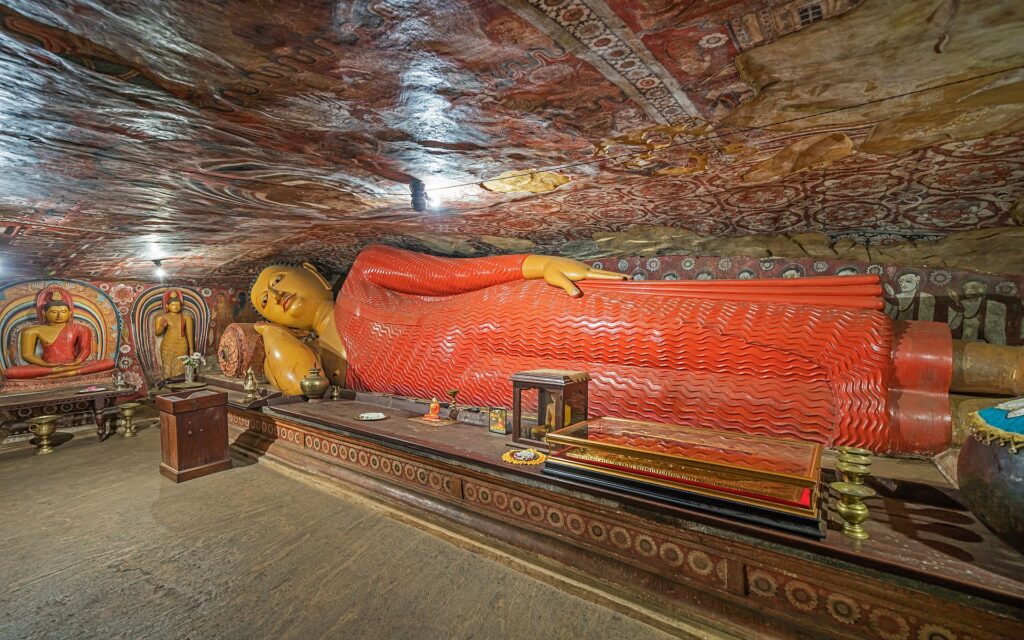
Murals
It is credited that four ‘Sittara’ artists painted the Degaldoruwa murals: Nilagama Patabanda, Chief Layman of Balavatvala; Devaragampola Silvatänna, an unordained monk, who also painted mural paintings at Ridi Viharaya; Kosvatte Hiriyale Naide and Devendra Mulachari. Most striking is the ceiling painting, a very artistic depiction of Buddha’s inner spiritual struggle in the ‘Mara Yudde’ with Māra, the demon of death, rebirth, and desire. One of the interesting things about these murals is that the different elements – the people, the trees, and the animals are all the same size. Only the front view of the people is presented; there is no back view. In some sort of stylization, it would seem like it is because the trees themselves were drawn as their central trunk and leaves spread out on either side. It captures the small details in vivid detail from the trunks of the elephants to the dressing of the attendants.
All the color pigments that have been utilized by the artists in the murals have been derived from the barks of trees found within the locality. Hidden amidst the rocky hills and green valleys of countryside Kandy is a hidden treasure the Degaldoruwa Raja Maha Vihara. Construction on the temple began in the late 1770s under King Kirti Sri Rajasinha’s rule. It was completed under Rajadhi Rajasinha’s rule many years later.

How to Reach:
If you’re traveling through Kandy you can approach the Degaldoruwa Viharaya by the Lewella Bridge Road or take a diversion at Nattarampota on the Kundasale Road.
Regarding the destination
It is famous for the exquisite paintings adorning its walls and one can be forgiven for getting lost in these vibrant works of ancient Kandyan art. The cave is cut out of a rock whose elevation is 40 feet, and contains the Shrine Room and an entrance. The history of the construction of Degaldoruwa Raja Maha Vihara is found on the Degaldoruwa Tamba Sannasa (Copper Plate)
Degaldoruwa Raja Maha Vihara is a place you need to visit to witness elegance within temples.
